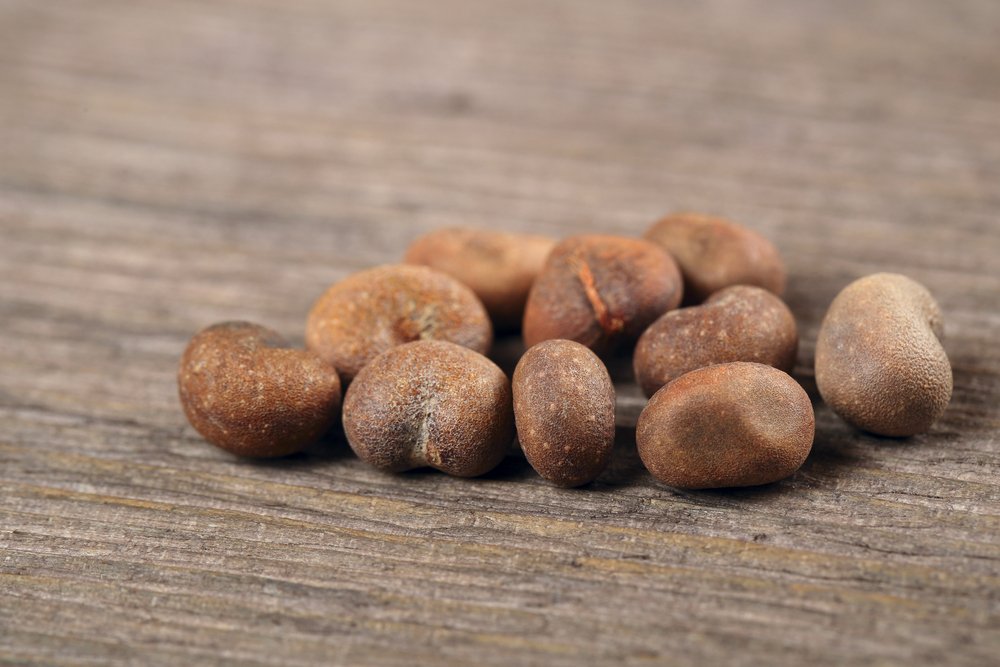5 Health Benefits of Baobab (and How to Use It)

This humble citrus fruit, pronounced "BEY-oh-bab," grows in Africa and Australia, and has long been a trusted aid in healthy skin, hair, and overall wellness for the locals in these regions. The baobab fruit hangs in hard pods upside down from the baobab tree. After the fruit is dried and harvested and the seeds have been removed, the baobab is ground into a powder, which can be added to many of our favorite foods.
Here are some health benefits associated with baobab and a few recipes to use in your next meal plan.
Health Benefits

Keeps Skin and Hair Healthy
Baobab is high in vitamin C, which helps the body absorb other nutrients more easily. Even more, it plays an important role in protecting skin and hair.
Regulates Body Fluids
This fruit also includes high levels of potassium, magnesium, and calcium, which are electrolytes that stimulate muscles and nerves as well as regulate body fluids. For physically active people, electrolyte loss can be a concern, so having some baobab powder on hand is a good way to maintain this balance.
Protects and Repairs Cells
Baobab is one of the world's richest sources of antioxidants, which are important for overall health because they help delay, repair, or prevent the damage to our cells caused by free radicals. This cell damage can result in serious health conditions such as diabetes, Alzheimer's, and cataracts.
Maintains Gastrointestinal Health
Also rich in dietary fiber, baobab can support digestion and improve satiety, meaning you'll feel full longer.
Controls Blood Sugar
Fiber can also help control blood sugar levels, which prevents any sudden fluctuations that may lead to feelings of fatigue, headaches, and, over the long-term, serious health conditions like diabetes.
Using Baobab

Because baobab is often sold in powder form, it can be used in smoothies, sauces, soups, and even baked goods. Here are some simple ways you can include baobab in your diet.
- For a post-workout drink, stir a tablespoon of baobab powder in a glass of water to replenish the electrolytes lost during your workout.
- Add a tablespoon to your favorite smoothie recipe for an extra boost of nutrients.
- Elevate your yogurt by sprinkling a little baobab powder on top.
- Mix a little powder into your baking. We recommend this chia seed pudding, a tasty and healthy treat that can easily incorporate some baobab.
- Snack on our chewy baobab bites for a naturally sweet alternative to less wholesome, artificially sweetened fruit snacks.
While it may appear unassuming, baobab is a nutrient-rich and highly adaptable food. Plus, it only takes a tablespoon or two per day to reap the incredible health benefits of this exotic fruit.
Photos: Dudarev Mikhail / Shutterstock.com, Ivan Feoktistov / Shutterstock.com, marekuliasz / Shutterstock.com
Healthy Eating
- Healthy Snacks
- Healthy Meals
- Healthy Recipes
- Sports Nutrition
- Nutrition and Special Diets
- 21 Day Fix
- 5 Popular Diet Similarities
- Alkaline Diet
- Anti-Inflammatory Diet
- Calorie Counting
- Carb Cycling Diet
- Celiac Disease
- Cholesterol
- Clean Eating
- Crohn's Disease
- DASH Diet
- Detox Diet
- Diabetes
- Diabetes Diet
- Diet Pill Dangers
- Fat Burning Foods
- Gluten-free Diet
- Glycemic Index
- Heart Health
- High Blood Pressure Diet
- High Fiber Foods
- How to Eat Healthy
- How to Lower Blood Pressure
- Hypertension
- IBS Diet
- Ketogenic Diet
- Liquid Diet
- Low GI Foods
- Low-Carb Diet and Foods
- Low-Fat High-Carb Diet
- Mediterranean Diet
- Mediterranean Diet Foods
- Military Diet
- Nutrition Labels Explained
- Paleo Diet
- Raw Food Diet
- Superfoods
- Sustainable Weight Loss
- Thrive Diet
- Vegan Diet
- Vegetarian Diet
- Weight Loss Shakes
- Whole30
- Vitamins, Minerals & Nutrients

